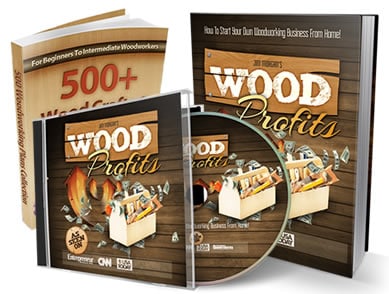Subscribe to Salty Woodworking on YouTube
Woodworking can be an expensive hobby or profession, but it doesn’t have to be. With just a few basic materials and tools, it’s possible to create beautiful and functional pieces without breaking the bank. In this article, we’ll explore one woodworker’s approach to building planter boxes using only fence boards and simple tools.
Cost Breakdown of Materials The woodworker in question uses cedar fence boards, which cost around $3.98 each in their area. With about 70 boards, they can make enough planter boxes to bring in $1,000 to $1,500 in just a week. This makes for a very affordable and profitable project.
Free Plans: https://www.saltywoodworking.net/projects/3-picket-planter
Useful Woodworking Tools
Cost Breakdown of Materials
To create woodworking projects, one does not necessarily need expensive hardwoods or tools. In fact, using fence boards can be an affordable option. For instance, Salty Woodworking used 70 cedar fence boards, which cost $3.98 each, totaling $280. These boards were enough to fulfill the week’s orders, which generated $1,000 to $1,500 in revenue, depending on the size of the boxes. He used a skill saw, nail gun, or impact with screws to complete the project.
Investing in a miter saw can be a significant time saver, but it is not a requirement. He purchased a miter saw with the profits from previous projects, but previously used a Cobalt job site saw borrowed from their dad. He also invested in a planer to make the planners look better, but this step is not necessary.
To create a box, he used two sides that were 13 inches long and two sides that were 11 and 3/4 inches long, which required four pieces of each length. The bottom of the box also required two pieces that were 11 and 3/4 inches long. The legs and top rim were made from a fence board, which was ripped down to an inch and 3/4 thick, resulting in three strips per board. To make the box 16 inches tall, he cut eight 16-inch pieces.
Overall, using fence boards can be a cost-effective option for woodworking projects, and investing in tools can increase efficiency and profits over time.
[Guide] How To Launch Your Woodworking Business For Under $1000
Click Here To View
If you’re considering turning your woodworking hobby into a part-time business check out this helpful guide on how to get started.
Basic Tool Requirements
To start woodworking, one doesn’t need expensive tools or materials. Salty Woodworking suggests that using fence boards is an affordable option, as they cost about $3.98 per piece in their area. With 70 fence boards, they were able to make a week’s worth of orders, which earned them $1,000 to $1,500.
For tools, he recommends a skill saw, a nail gun, or an impact with screws. These basic tools are enough to get started with woodworking. As he started making money, they invested in a miter saw, which is a huge time saver.
He also suggests using a planer to make the planners look better, but it is not necessary. Sanding the boards is not recommended as it is time-consuming and uses up more sandpaper.
To make a box, he uses a table saw to rip down a fence board into three pieces to make legs and a top rim. They also recommend using a miter saw to cut more than one board at a time.
Overall, he emphasizes that time is money, and the more one can pump out, the more money they can make. As they make profits, they suggest investing in better tools to make things faster, more efficient, and easier.
Investing in Efficiency
Salty Woodworking emphasizes the importance of investing in efficiency to save time and make more money. By using simple tools like a skill saw and nail gun, along with affordable fence boards, he is able to produce woodworking products and generate profits. With the money earned, he has invested in a miter saw to make cutting more accurate and efficient.
He also recommends investing in a planer to bring out the color and improve the appearance of the products. However, sanding the fence boards is not necessary and can be time-consuming.
To make a box, he cuts fence boards into specific dimensions and uses wood glue and nails to assemble the pieces. He also shares a tip for cutting boards quickly and accurately using a previous cut as a guide.
Overall, by investing in simple tools and efficient techniques, he is able to maximize profits and produce high-quality woodworking products.
Optional Planning Step
For those looking to make a profit from woodworking, there are ways to keep costs low while still producing quality products. One option is to use fence boards, which can be purchased for around $3.98 each, depending on the area. With 70 fence boards, one woodworker was able to make $1,000 to $1,500 worth of products in just one week.
While a miter saw is a helpful tool to have, it is not necessary. A skill saw and a nail gun or impact with screws can get the job done. As profits increase, investing in a planer can make products look even better.
To make a planter box, two sides that are 13 inches long and two sides that are 11 and 3/4 inches long can be cut from one fence board. Six pieces that are 11 and 3/4 inches long are needed for the bottom, and three pieces that are 16 inches long are needed for the legs. The legs can be cut from a fence board that has been ripped down to 1 and 3/4 inches.
To assemble the box, wood glue can be applied to each edge of the boards, and the legs can be attached with screws or brad nails. Once both sides are completed, wood glue can be applied to the edges, and the sides can be attached to form the box.
While not necessary, planing the boards can make the finished product look even better. A pass can be made on one side with a planer to bring out the color and make the board look cleaner. Only the outside of the box needs to be planed, as the inside will be covered with dirt.
Overall, using fence boards and simple tools can be a cost-effective way to make quality woodworking products and turn a profit.

Building a Planter Box
Cutting Dimensions
To build a planter box, one needs fence boards as the primary material. The cost of the fence boards depends on the location and the prices in that area. For instance, normal cedar boards cost around $3.98 per piece, and 70 fence boards cost approximately $280. Using these fence boards, one can create planter boxes of various sizes. For instance, to make a 13-inch planter box, one needs four sides, two of which should be 13 inches long, and the other two should be 11 and 3/4 inches long. The bottom of the box requires two pieces that are 11 and 3/4 inches long. To make the legs and top rim, one can use a fence board of one inch and a half thickness.
Preparing the Legs and Top Rim
To make the legs, one can use a table saw to rip down a fence board into three pieces, each approximately one inch and three-quarters in thickness. For a 16-inch tall box, eight pieces of 16 inches each are required to make the legs. Using a miter saw can save time when cutting the boards. To make the top rim, one can use the leftover fence board from making the legs.
Assembly Process
To assemble the planter box, the longer boards should be taken first. One should take the 11 and 3/4 inch boards and put them aside. Then, a line of wood glue should be applied along each edge of all the boards. One can take one board and two legs and align them flush with each other. The legs should be attached to the top and side of the board using either screws or Brad nails. The same process should be repeated for the other leg. Once both legs are attached to the board, the board should be flipped over, and another board should be attached to the other side of the legs using nails. This process should be repeated for the other side of the planter box.
Gluing and Nailing
Once both sides of the planter box are complete, they should be turned on their sides, and a line of glue should be applied between them. Then, two sides should be taken, and one should be aligned with the top of the other board. Nails should be used to attach the two sides. The same process should be repeated for the other side.
Completing the Box
To complete the box, one should turn it around and attach the remaining 11 and 3/4 inch boards to the bottom. Finally, the top rim can be attached to the box. One pass with a planer can be used to smooth out the outside of the box, but it is not necessary. Sanding the boards is practically impossible, and it is not required to sand the inside of the box as it will be covered with dirt.
Tips for Consistent Cuts
To make consistent cuts, it is important to have the right tools. While a miter saw is not necessary, it can save a lot of time and effort. A skill saw, nail gun or even an impact with screws can also get the job done.
Using fence boards is a cost-effective option, with cedar boards costing around $3.98 per piece. With 70 fence boards, it is possible to make at least $1,000 to $1,500 in a week’s orders.
To make a square box, cut two sides that are 13 inches and two sides that are 11 and 3/4 inches. The legs and top rim can also be made from fence boards.
A table saw can be used to rip down a fence board into three pieces for the legs and top rim. To make the legs, cut them at 16 inches exactly, which means the box overall will be about 16 and 2 inches tall.
To assemble the box, use wood glue and brad nails to hold the pieces in place. It is important to line up the sides and legs to ensure a flush finish.
While sanding the boards is not necessary, planing them can make the boxes look better. A planer can be a good investment as profits increase.
Overall, using fence boards and investing in the right tools can make consistent cuts easier and more efficient.
Safety Tips
When working with woodworking tools, safety should always be a top priority. Here are some safety tips to keep in mind when working with fence boards:
- Always wear appropriate safety gear, such as safety glasses, ear protection, and gloves.
- Use caution when using power tools such as saws and nail guns, and always follow manufacturer instructions.
- Keep your work area clean and free of clutter to avoid tripping hazards.
- When cutting fence boards, make sure to use a stable work surface and secure the board in place before cutting.
- Be mindful of the sharp edges of the boards and handle them with care to avoid injury.
- When using a brad nailer, keep your hands away from the area where the nail will be shot to avoid accidental injury.
By following these safety tips, you can ensure that your woodworking projects are completed safely and without incident.


